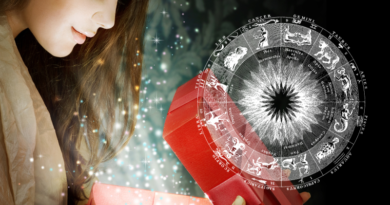How you can connect deeply with anyone (in 5 minutes)
(Collective Evolution | Jennifer Sodini) You are about to play a game. One that can reveal amazing things about whoever chooses to play it. You can learn deep things about yourself, or whoever you play it with. It’s about understand the mind and our subconscious desires.
You’ve likely noticed that the mind is a mysterious matrix, filled with fascinating programming “hacks” that are both surprising and enlightening when you begin to challenge and experiment within the mainframe. How it all works is something that has fascinated people for decades and as we find out more we begin to see interesting patterns that lead us to better understand ourselves.
The game below, from Oliver Emberton (see: How to Connect Deeply with Anyone in 5 Minutes), can be compared to something like a “life hack.” In a quick way, it helps to uncover intimate details of your personality, in a very fascinating way. If you do this alone, you can connect deeply with your subconscious in just 5-minutes to uncover subconscious desires, and discover personal truths that may have previously been suppressed. With a friend, you can understand more about them in ways you may not have before.
Something to consider is, once you learn what each element represents, you won’t be able to unlearn – this test is a one time only type thing, but is great to pass along nonetheless.
Ready? Here it goes…
In your mind’s eye imagine a vast desert, and in the midst of the “sea of sand” there is a cube.
The first task is to describe the cube, and explain all of the details of its aesthetic, size, material, and placement in the sand.
There are no right or wrong answers; this is extremely personal to your experience. Don’t rush, and be sure to elaborate on as many key elements that come to you…the more, the better.
The next task is to visualize a ladder. Where is it in relation to the desert and the cube? Describe as many details as possible. What does it look like? Is it big or small? What color is it?
The third step is to imagine a horse in this desert. Describe the horse…its location, and its actions. Is it in motion, or is it still? If it is in motion, where is it going? How does it feel, and what kind of energy is it giving off?
Now, there are flowers present in this scene. Describe the flowers, their colors, quantity, smell, etc. Where are they, in relation to the horse, ladder, cube, and sand?
The final question is to describe a storm that is now happening in the desert. Is it affecting the flowers, horse, ladder, cube or sand? What kind of storm is it, and how does it feel? Is it heading in a certain direction? Is it near, or far?
Okay, so now for the great reveal…but again, as we said in the beginning of the article, once you learn, you can’t unlearn. However, the answers your answers uncover are pretty incredible! Ready?
What each symbol represents
The cube represents you. The size indicates the ego, the placement shows how grounded you are, and the material conveys your openness. According to Emberton, “The trick here is that when asked to describe a blank, abstract entity – a cube – your imagination will tend to project its own identity onto it.”
The ladder represents your friends. Were your friends close to the cube, or far? Were they leaning up against it, or inside of it? The placement of the ladder indicates the nature of the relationships with those closest to you.
The horse represents your ideal mate. Emberton states, “The type of horse reveals a lot about what you yearn for in a partner. Some people see a steady brown workhorse, others a shining pegasus or unicorn. Make of these people what you will. Is your horse nuzzling your cube affectionately, or taking a bite out of it? Is it far from your cube, or walking away? This can represent a current partner, or an aspirational one, but the results are often a mix of touching and hilarious.”
The flowers represent children. The quantity of flowers reveals how many children you imagine having, and the color/aesthetic nature can indicate how you view their health/future. Their placement reveals your relationship with them.
Finally, the storm represents threat. Emberton elaborates, “This speaks to the current state of the person, and how they perceive risk in their life. Some may see a distant storm, on the lip of the horizon, fading from sight. Others may view themselves in the midst of a thunderous apocalypse, hailstones the size of tennis balls pelting their fragile cube and horse. Chances are those people have some immediate trauma in their life.”
Source: Collective Evolution
You may also like:




